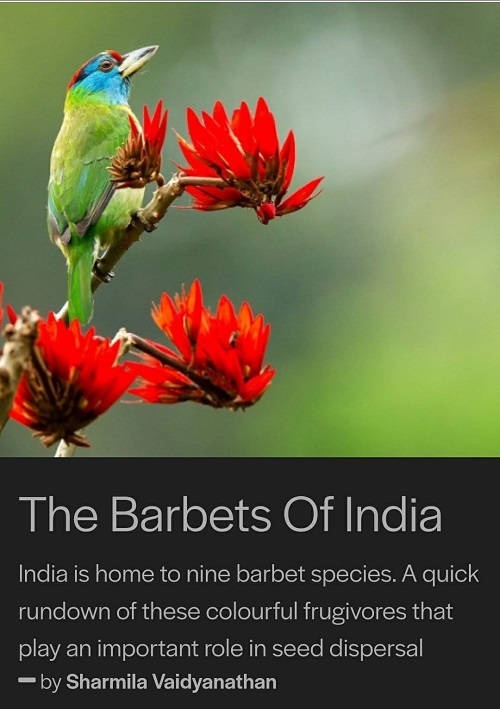India is home to nine barbet species. A quick rundown of these colourful frugivores that play an important role in seed dispersal.
As published in Nature inFocus on August 26, 2021.
Asian barbets are members of the Megalaimidae family and are small, colourful birds that are frequently found in forests and other green patches. They are mainly divided into two subfamilies; Psilopogon and the Caloramphus. India is home to nine barbet species, all of which belong to the Psilopogon subfamily. From a conservation point of view, these solitary, fruit-eating birds are not threatened and have stable populations in the country. Barbets play a vital role in seed dispersal. While figs are their preferred fruits, they are also known to feed on other berries and wild fruits. Barbets regurgitate seeds and indigestible parts of the fruit, enabling forests to flourish and grow.
A recent first-of-its-kind study by the Wildlife Institute of India (WII) and Nature Conservation Foundation (NCF) showed that the seed dispersal mechanisms of small fruit-eating birds like barbets had a significant impact on both fragments and vast forest areas. The study highlighted the importance of these forest segments in protecting wildlife biodiversity. As more and more forests are converted into land for agriculture and various developmental projects, it will only be a matter of time before we start seeing the impacts on stable bird populations like the barbets. Beyond deforestation, a report by BirdLife International also showed that barbets are among the victims of illegal wild bird trade.
With their bright colours and distinct calls, barbets teach us the importance of preserving our green spaces and protecting our biodiversity. Here is a quick primer on the barbets of India.
Read the complete story here. –> The Barbets Of India
